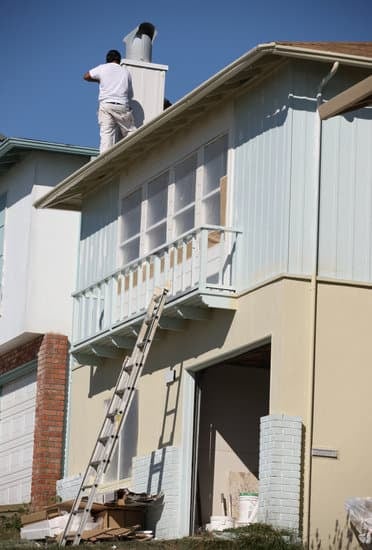Can you get a personal loan for home improvements? Many homeowners often find themselves asking this question when considering upgrades or renovations to their properties. Whether it’s a new kitchen, bathroom remodel, or adding extra living space, the cost of these projects can often be substantial. In this article, we will explore the options available for financing home improvements through personal loans and provide valuable insights into the process.
Home improvements are an essential aspect of maintaining and enhancing the value of your property. From addressing structural issues to simply giving your home a fresh look, there are numerous reasons why homeowners may want to embark on renovation projects. However, funding these projects can be challenging, which is where personal loans come into play.
In this introductory section, we will delve into the various types of personal loans available for home improvements and discuss the eligibility criteria for obtaining them. By understanding the pros and cons of using a personal loan for home improvements, readers will be equipped with the knowledge needed to make informed decisions about financing their renovation projects.
Stay tuned as we provide tips on how to apply for a personal loan and choose the right lender – all tailored specifically to funding home improvements.
Types of Personal Loans Available for Home Improvements
When it comes to financing home improvements, there are several types of personal loans available to homeowners. Understanding the differences between these options can help you make an informed decision about which loan is best for your specific needs.
Secured Personal Loans
One option for financing home improvements is a secured personal loan, which requires collateral such as your home or other valuable assets. These loans typically have lower interest rates and longer repayment periods, making them a popular choice for larger renovation projects. However, it’s important to consider the risk of losing your collateral if you’re unable to repay the loan.
Unsecured Personal Loans
On the other hand, unsecured personal loans do not require any collateral, making them a less risky option for homeowners. These loans are based solely on your creditworthiness and income, and they usually have higher interest rates and shorter repayment terms. Unsecured personal loans are ideal for smaller home improvement projects that don’t require a substantial amount of funds.
Home Equity Line of Credit (HELOC)
Another type of personal loan available for home improvements is a Home Equity Line of Credit (HELOC), which allows you to borrow against the equity in your home. With a HELOC, you can access funds as needed up to a certain limit and only pay interest on the amount you borrow. This flexible financing option is beneficial for ongoing or long-term renovation projects.
Eligibility Criteria for Obtaining a Personal Loan for Home Improvements
When considering obtaining a personal loan for home improvements, it is important to understand the eligibility criteria that lenders typically require. Generally, lenders will look at your credit score, income, and existing debt when determining if you qualify for a personal loan.
Most lenders prefer borrowers with a credit score of 660 or higher, although some may accept lower scores. In addition to credit score, your income will also be a crucial factor in determining your eligibility for a personal loan. Lenders will consider your debt-to-income ratio to ensure that you have enough income to manage additional monthly payments.
Another important eligibility criterion for obtaining a personal loan for home improvements is your credit history. Lenders will review past borrowing behavior to determine if you have a history of making on-time payments and managing credit responsibly.
In addition to these key factors, some lenders may also consider other aspects such as employment status, recent credit inquiries, and collateral when assessing whether you are eligible for a personal loan for home improvements.
| Eligibility Criteria | Description |
|---|---|
| Credit Score | 660 or higher preferred |
| Income | Debt-to-income ratio considered |
| Credit History | Past borrowing behavior reviewed |
Pros and Cons of Using a Personal Loan for Home Improvements
When considering home improvements, one financing option to consider is obtaining a personal loan. Personal loans offer flexibility and quick access to funds, making them an attractive choice for homeowners looking to enhance their living spaces. However, like any financial decision, there are both pros and cons to using a personal loan for home improvements.
One of the main advantages of using a personal loan for home improvements is the flexibility it offers in terms of usage. Unlike specific home improvement loans or lines of credit, personal loans can be used for a wide range of purposes related to improving your home, from remodeling a kitchen to adding a new room. Additionally, personal loans typically have fixed interest rates and monthly payments, making it easier to budget for the cost of the project.
On the flip side, there are also some drawbacks to using a personal loan for home improvements. One potential disadvantage is that personal loans may have higher interest rates compared to secured loans, such as home equity loans or lines of credit. This means that you could end up paying more in interest over time when using a personal loan to finance your home improvement project.
Additionally, obtaining large amounts through a personal loan could impact your credit score and overall financial health if not managed properly. It’s important to carefully consider these factors before deciding whether or not to pursue a personal loan for your home improvements.
How to Apply for a Personal Loan for Home Improvements
When it comes to applying for a personal loan for home improvements, there are a few key steps to keep in mind. The first step is to research and compare different lenders to find the best interest rates and terms for your financial situation. Look at traditional banks, credit unions, online lenders, and peer-to-peer lending platforms to explore all options available to you.
Once you have chosen a lender, the next step is to gather all necessary documentation. This typically includes proof of income, employment verification, and a list of your current debts and expenses. You may also need to provide details about the specific home improvement project you plan to undertake.
After gathering your documentation, it’s time to fill out the loan application. Be prepared to provide personal information such as your social security number, address history, and contact information. Some lenders may also require a hard credit check as part of the application process.
Finally, once your loan application is submitted, be prepared for the lender’s underwriting process. This process typically involves a close review of your financial history and current creditworthiness. If approved, you will receive the funds for your home improvement project and can begin making arrangements with contractors or purchasing materials needed for the project.
Tips for Choosing the Right Lender for a Personal Loan for Home Improvements
When it comes to choosing the right lender for a personal loan for home improvements, there are several factors to consider. Making an informed decision about your lender can make a significant impact on the overall cost and experience of obtaining and repaying your loan. Here are some essential tips to keep in mind:
- Interest rates: Research and compare the interest rates offered by different lenders. Even a slight difference in interest rates can add up to significant savings over the life of your loan.
- Loan terms: Consider the repayment terms offered by each lender. Look for flexibility in repayment options that align with your financial situation and goals.
- Fees and charges: In addition to interest rates, take note of any additional fees or charges associated with the loan. These may include origination fees, prepayment penalties, or late payment fees.
Furthermore, it’s crucial to assess the reputation and customer service of potential lenders. Reading reviews from other borrowers can provide insight into the experiences you might expect when working with a particular lender. Additionally, consider reaching out to lenders directly with any questions or concerns you may have about their loan products.
Finally, don’t overlook the importance of transparency and clear communication. A reputable lender should be upfront about all aspects of the loan process, terms, and conditions. Take the time to read and understand all documentation provided by each lender before making a decision.
By carefully evaluating these factors and considering multiple lenders, you can confidently choose a personal loan for home improvements that best suits your needs and financial circumstances.
Alternatives to Personal Loans for Home Improvements
When it comes to making home improvements, personal loans may not be the right fit for everyone. Fortunately, there are several alternatives to consider when seeking financing for your home improvement projects.
One popular alternative to personal loans for home improvements is a home equity loan or line of credit. These options allow homeowners to borrow against the equity in their homes, using the value of their property as collateral. This can often result in lower interest rates and longer repayment terms compared to personal loans.
Another alternative is a cash-out refinance, which involves replacing your current mortgage with a new one that has a higher balance. The difference between the two amounts is then given to you in cash which can be used for home improvements. While this option can provide a larger sum of money at a lower interest rate, it’s important to consider the costs and potential risks involved with refinancing.
For those who prefer not to take on additional debt, saving up and paying for home improvements out of pocket is another alternative worth considering. While this may take longer and require more patience, it can ultimately save you money on interest and fees associated with borrowing. Additionally, using savings instead of credit can provide greater financial security and peace of mind during the home improvement process.
Case Studies
Many individuals have opted for personal loans to finance their home improvement projects. Here are some real-life examples of how people have used personal loans for home improvements:
- John and Sarah decided to renovate their kitchen to increase the value of their home before putting it on the market. They took out a personal loan to cover the costs of upgrading appliances, cabinets, and countertops. By making these improvements, they were able to sell their home at a higher price than originally anticipated, ultimately making a profit on their investment in the loan.
- Lisa and Michael wanted to add a backyard deck to their home for outdoor entertaining. They chose to obtain a personal loan to fund this project, allowing them to pay for materials and labor upfront. This decision allowed them to enjoy their new deck immediately without having to wait and save up funds over time.
- David needed to make urgent repairs after his basement flooded due to heavy rains. He applied for a personal loan to cover the costs of water damage restoration, including replacing flooring, drywall, and electrical work. The quick approval process helped David address the damage promptly, preventing further issues with mold and structural integrity.
These case studies demonstrate that personal loans can be a practical option for financing various types of home improvement projects. From selling a property at a higher price, adding value through additional features or dealing with unexpected repairs, individuals have successfully utilized personal loans as an effective financial tool for enhancing their homes.
Conclusion
In conclusion, obtaining a personal loan for home improvements can be a viable option for many homeowners. However, it is important to carefully weigh the pros and cons before making a decision. The key to ensuring a successful outcome is to thoroughly understand the types of personal loans available, the eligibility criteria, and the application process. By doing so, individuals can make informed decisions about financing their home improvement projects.
It is essential for homeowners to consider alternative options as well, such as home equity loans or lines of credit, in addition to personal loans. Each financing option comes with its own set of advantages and disadvantages, so it’s crucial to compare them and choose the one that best fits individual circumstances.
Ultimately, securing a personal loan for home improvements requires careful consideration and research. By understanding the different types of loans available, eligibility criteria, application processes, and alternative options, individuals can make informed decisions that will enable them to finance their home improvement projects in a way that aligns with their financial goals and needs.
Frequently Asked Questions
Can I Use a Personal Loan to Renovate a House?
Yes, you can use a personal loan to renovate a house. Personal loans are often used for home improvement projects because they provide a lump sum of money that can be used for any purpose, including renovations. However, it’s important to carefully consider the terms and interest rates of the loan before using it for home renovation.
Is It Smart to Take Out a Loan for Home Improvement?
Whether it is smart to take out a loan for home improvement depends on your individual financial situation and the specific circumstances of your renovation project. Taking out a loan for home improvement can make sense if you don’t have enough savings to cover the costs upfront and if the improvements will add value to your home.
However, it’s important to carefully consider the terms of the loan and assess whether you can realistically afford the monthly payments.
Is a Personal Loan or Credit Card Better for Home Renovation?
Whether a personal loan or credit card is better for home renovation depends on your credit score, the amount of money needed for the project, and your ability to repay the debt. Personal loans typically have lower interest rates than credit cards and offer fixed monthly payments, which can make them a better option for larger renovation projects.
On the other hand, credit cards may be suitable for smaller projects or if you can pay off the balance quickly to avoid high-interest charges.

I’m thrilled to have you here as a part of the Remodeling Top community. This is where my journey as an architect and remodeling enthusiast intersects with your passion for transforming houses into dream homes.





